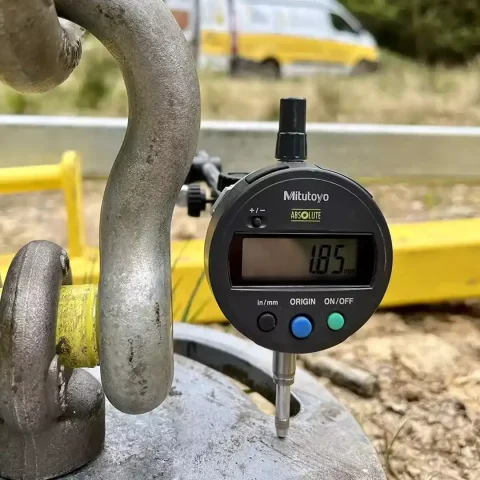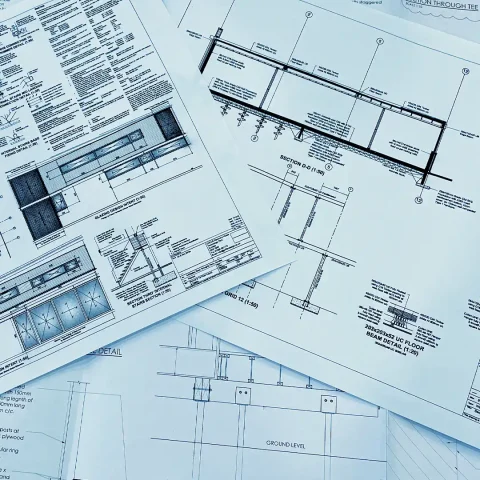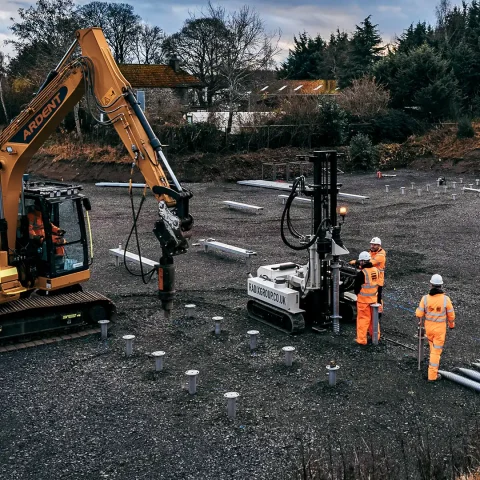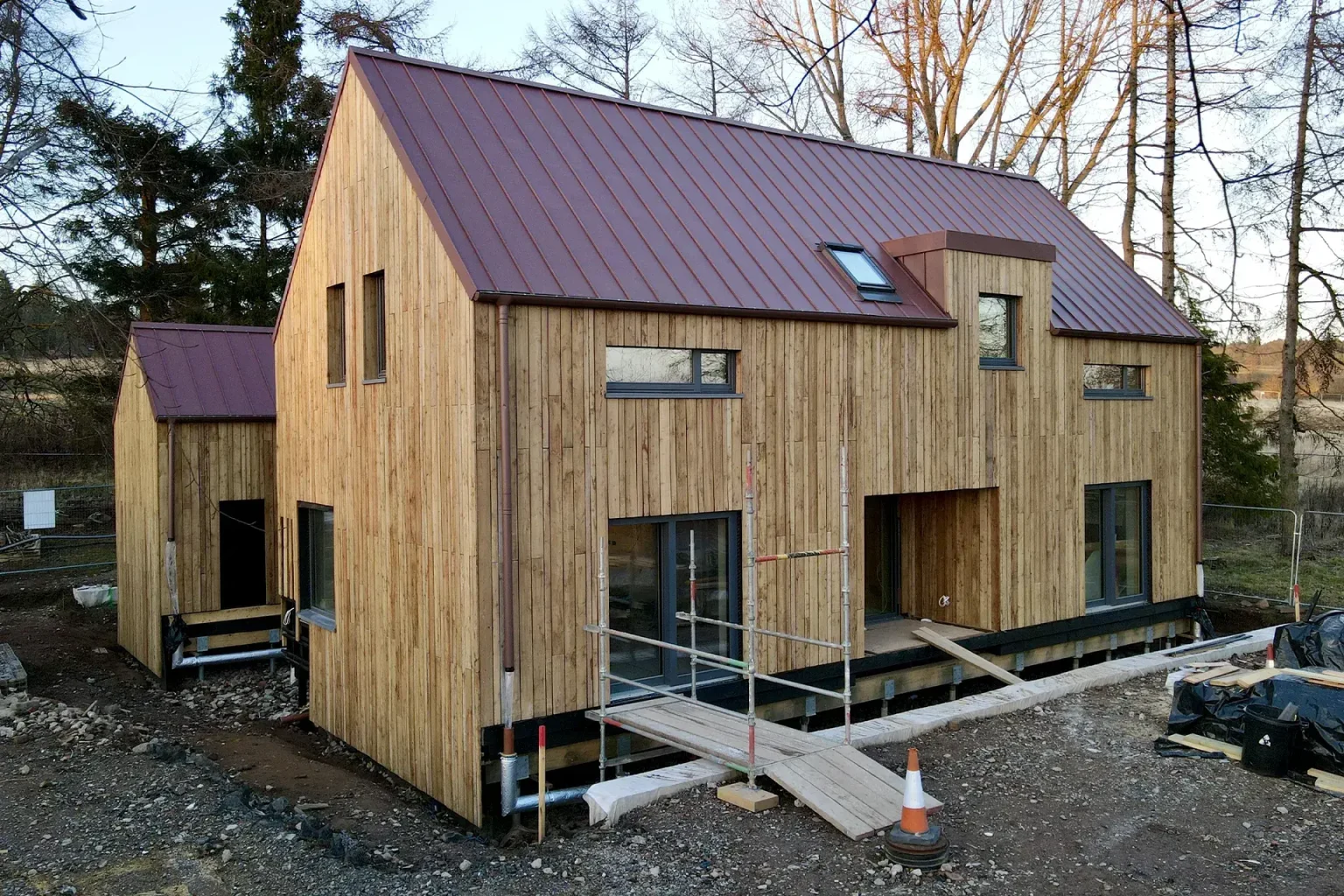
Foundations for Houses
Specialising in helical screw pile foundations, RADIX has established itself as a leader in providing robust, reliable, and efficient foundations for houses. Our expertise lies in adapting these advanced technologies to suit a variety of housing projects, ensuring your house foundations stand strong.
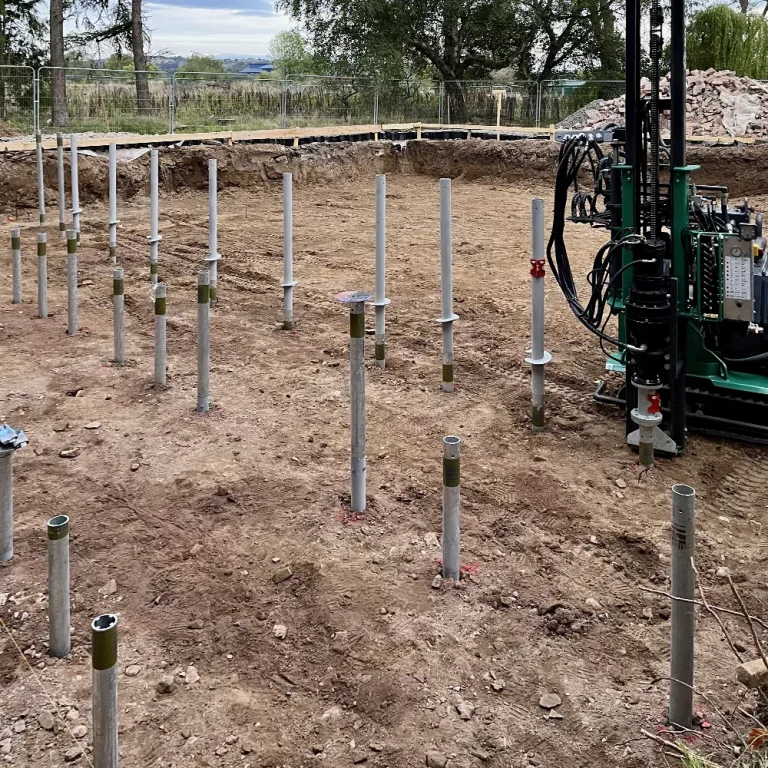
Build a house on screw foundations
Eco-friendly foundations for modern houses, eco-houses, passive houses, cottages and modular buildings.
When it comes to building your dream home, the foundation is not just a starting point; it’s the bedrock of your future.
Screw foundations offer unparalleled stability and durability. These foundations are not only quick to install, but also minimise environmental impact, making them an ideal foundations for houses and modular building. Whether you’re constructing houses on uneven terrain or in flood-prone areas, RADIX’s screw foundations provide a steadfast solution.
Our focus goes beyond providing the building blocks for construction. It also drives us to equip custom house builders, new house builders, and eco house builders alike with the right foundations. We don’t just work with large UK house builders, our reach extends to passionate small house builders and even the novices who want to build a house on their own or are looking to build a house extension.
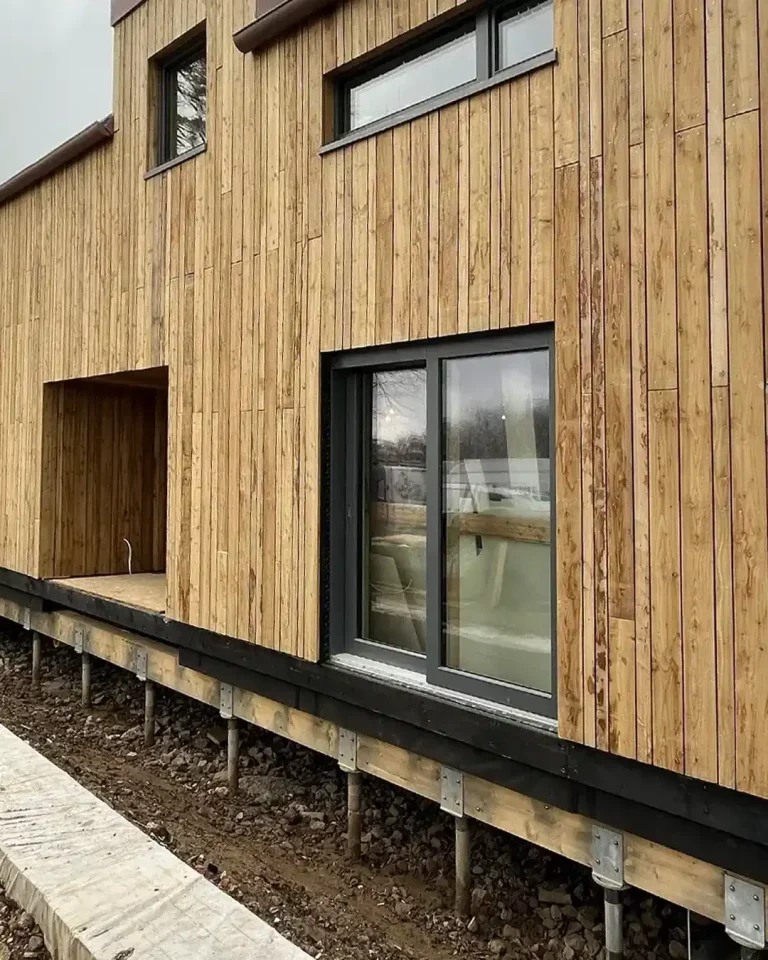
Redefining foundations for houses in 2024
House foundations are fundamental to all construction types, and RADIX’s cutting-edge technology enables us to cater to the diverse needs of our customers. Whether you’re looking for screw piles for houses, pondering over the varied types of house foundations, or seeking how to build house foundations, we are here to guide you.
We understand the importance of building foundations and footings that match the character of your project. It may be a wooden house, stone house, or modern house; we’ve got you covered. Our foundations also extend to structures like foundations SIP building, passive houses, granny annex, and eco houses.
Types of house foundations – It’s time to change and modernise
In the realm of house construction, foundation choices vary widely. Traditional foundations, like concrete slab foundations, basement foundations, pier and beam foundations, raft or mat foundations, or crawl space foundations, have been the norm for years. However, RADIX’s screws offer a compelling alternative, providing benefits such as reduced installation time and enhanced stability.
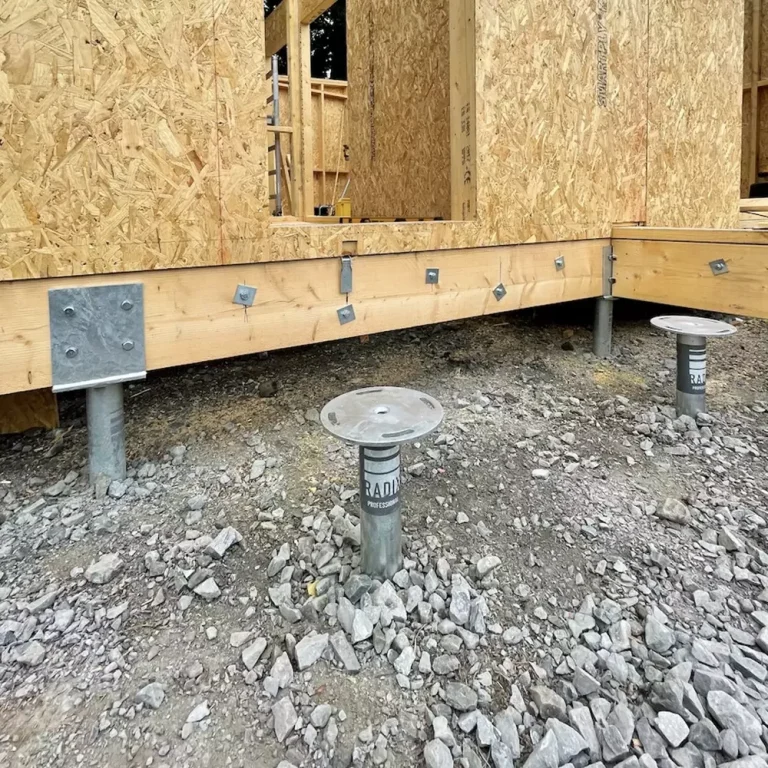
Sustainable construction in the house building sector with robust and sustainable foundations for houses
Our solutions encompass various kinds of construction, from a timber frame eco-house to modular building.
Even for those building passive house foundations or a SIP building with a specific interest in green building standards, we can support you. We cater to the requirements of modular house builders, eco house builders, and timber frame house builders alike, all the time focusing on reducing environmental impact.
Taking into consideration factors like how deep are foundations for a house, how long do house foundations last, and the efficient foundation work itself, we ensure that every house foundation installed stands the test of time.
Why are screws better than concrete for your house foundations?
Screw piles, also known as helical piles, offer several advantages over traditional concrete foundations when it comes to building a house. While both have their place in construction, certain conditions and requirements may make our sustainable screws a more suitable choice.
It’s important to note that the choice between our screws and concrete foundations should be based on the specific requirements of the house-building project, including soil conditions, load requirements, environmental considerations, and budget.
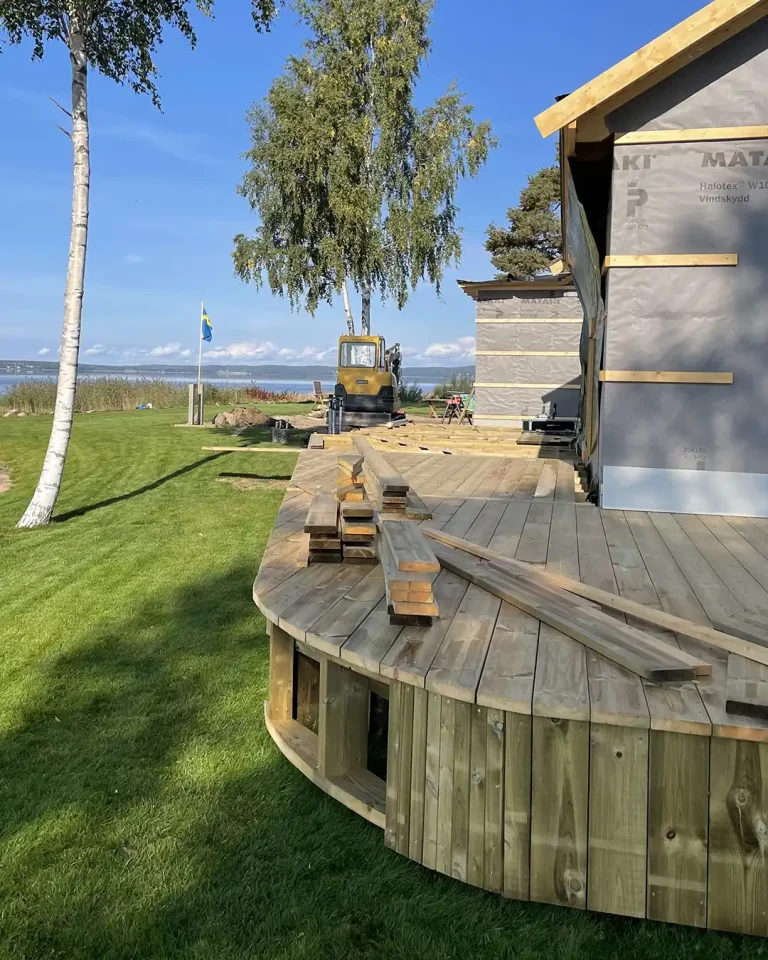
The installation process for a house using RADIX’s sustainable foundations
Site assessment and planning
Initial survey: Before installation begins, a thorough survey of the site is conducted. This includes assessing soil type, understanding the terrain, and identifying any potential obstacles or challenges. Load tests and calculations based on engineer reports will be done to select the best screws to use and at what depth optimisation occurs.
Design and planning: Based on the survey, a foundation plan is developed. This plan determines the number of screws needed, their placement, and the depth to which they must be installed.
Preparation of the site
Clearing and marking: The site is cleared of any debris or obstructions, and the locations for each screw are then marked according to the foundation plan.
Installation of screw foundations
Equipment setup: Specialised screw piling installation equipment, typically a hydraulic drive motor attached to a construction vehicle like an excavator, is set up on-site, or a smaller hydraulic installation machine on tracks can be used.
Installing the screws: Each screw is positioned at its marked location. The hydraulic drive motor is used to rotate and screw the pile into the ground. The process is akin to screwing into wood but on a much larger scale.
Depth and torque monitoring: As the pile is driven into the ground, the depth and torque are closely monitored. This ensures that each pile reaches the necessary depth and is installed with the correct force, providing the required load-bearing capacity.
Levelling and adjustments
Ensuring level foundations: Once the screws are installed, they are checked for levelness. Adjustments are made as necessary to ensure that the tops of the piles are at the correct height and orientation for the building structure.
Attaching foundation brackets
Securing the structure: After the piles are in place and levelled, foundation brackets are attached to the tops of each screw. These brackets are what connect the screws to the structure of the house, ensuring a secure and stable foundation.
Quality checks and final inspection
Inspection: A final inspection is conducted to ensure that all the screws are correctly installed and meet the required specifications.
Documentation: The installation process, including depth, torque, and levelling of each pile, is documented for future reference and quality assurance.
Construction of the house
Immediate progress: One of the advantages of screw piles is that construction of the house can commence immediately after the foundation installation is complete.
Clean-up and site restoration
Restoring the site: After installation, the site is cleaned up, with any excess soil or materials removed. The minimal impact of the installation process means the site remains largely undisturbed. If we needed to add ground screw foundations for decking, fences, carports, or even a garden room, we could have added this during the installation.
Our expert installation teams are ready to help support your next house foundations
Throughout every phase of your project—from initial engagement, through meticulous design and planning, to comprehensive site surveys, ground testing, and installations—our approach is defined by clear communication, transparency, and consummate professionalism.
Leveraging the specialised skills of our certified installers and utilising state-of-the-art machinery and equipment, we efficiently collect and analyse the essential data for your project. This strategic process ensures the successful completion of your project, both on schedule and within your budget.
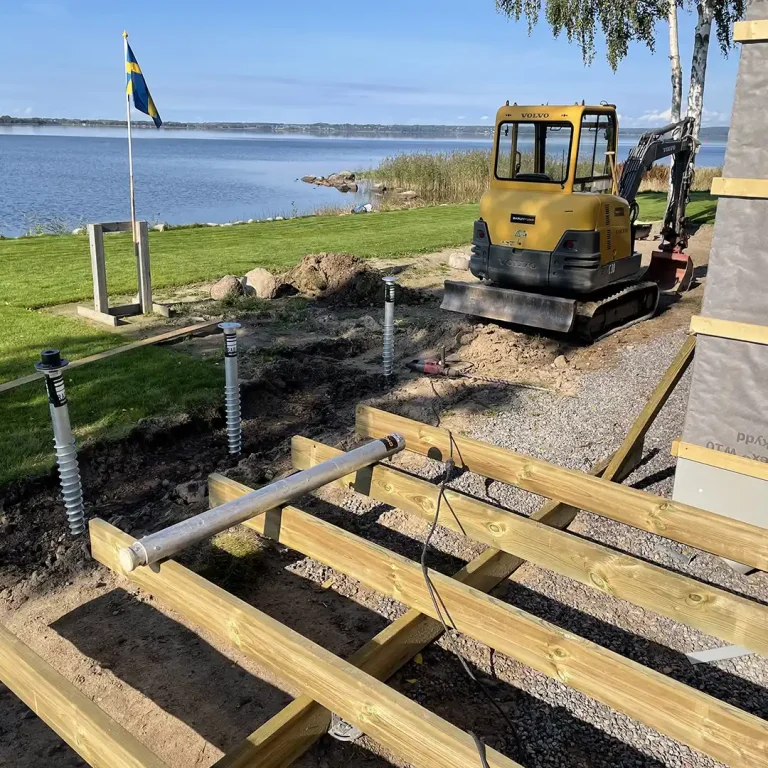
Work with us to build better houses on more sustainable foundations
We work with a diverse range of professionals and entities in the construction industry to deliver effective foundation solutions for houses. These collaborations are crucial for ensuring that the foundations are not only technically sound but also align with the overall design and functionality of the housing projects.
If you are a private client, architect or designer, house building contractor, property developer, civil or structural engineer, local authority, or an environmental consultant involved in house construction, then speak with us, as we can help each other build better houses more sustainably, that is also cost-effective.
Questions and answers about the foundations for houses on screws
If you have a question about our house foundations and the answer is not here, please contact us directly, and we’ll be happy to help you.
-
In short, yes. However, there are several factors that impact how many screws will be required and how deep they will need to be installed to provide the effective foundations for a new-build home. This includes the ground conditions, whether soft or if there is sloping ground to overcome, and the overall layout and weight of the building and expected contents.
-
The price will depend on the completed design, layout and screw specification for your house foundations, taking into account how many screws you will require and how deep they will need to be installed.
-
Our screws are providing the foundations for all types of houses. RADIX screws are used in supporting existing houses that may have foundation issues, house extensions, modern houses, eco-houses, modular buildings, passive houses and many others
